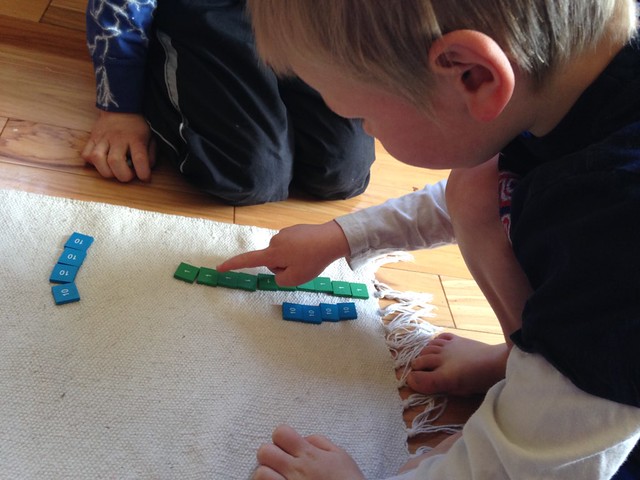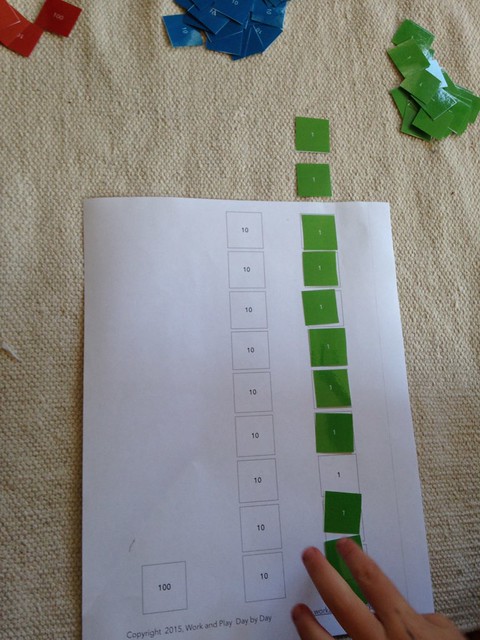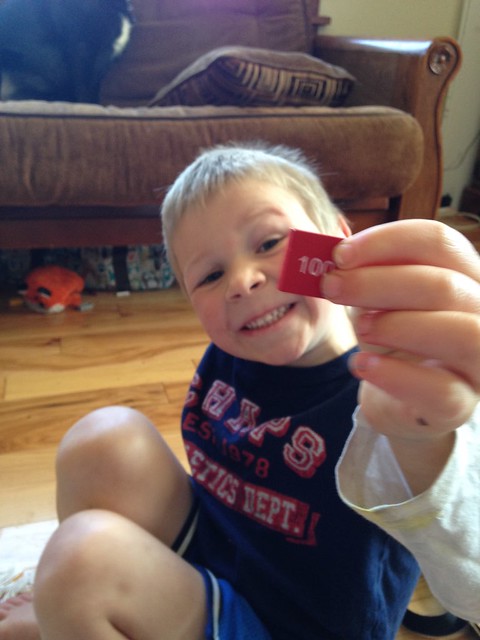 |
| 1 ten and 1 unit |
The goal is to be the first player to trade ten tens for one hundred piece.
When I first introduce the game, we use one dice and play several cooperative rounds. I require them to count out each unit piece prior to doing any exchanging. As they become more proficient, they start to figure out what number they need to roll in order to earn another ten. Don’t tell them, but this prepares them both for mental math, carrying in addition, AND even algebra (figuring out the missing amount to make ten).
In order to play, a student does not need to know the nomenclature or rote counting for all of the numbers 1-100. Honestly the only skill they NEED to have is the ability to count to 10. While we play, however, I take advantage of responding with the correct nomenclature.
“Look, Mommy! I have 3 tens!”
“You do have 3 tens! You have 30!”
When they count tens, I will do the same thing and echo back skip counting by ten instead of one.
This is one of several games that are much anticipated favorites for the next kid coming up the ranks in our house. The older crew will often take a break from what they are doing to come and participate in these lessons and look forward to an excuse to procrastinate on their own assignments play a round after it has been introduced. Today, Caleb and I were playing with Logan and Aidan pipes up (from the couch where he was supposedly reading a book), “Mom, did you know that when you only play with one dice you have to play at least 17 turns in order to get to 100? But you’d have to roll a six every time so that’s not very likely to happen.”




Our school does this game, they also send home a play at home version. When they study money they do a similar one but use different combinations of pennies,nickles, dimes, quarters and a dollar.
Now don't go giving away my secrets to playing it with money…that was supposed to be a new post later 🙂